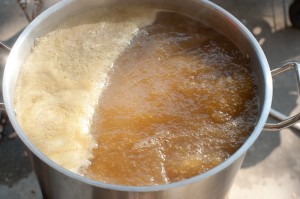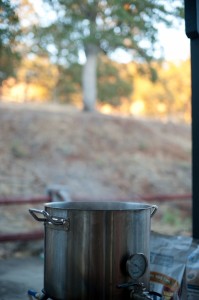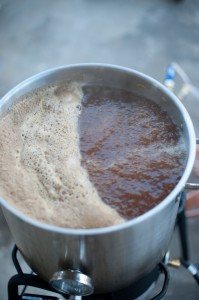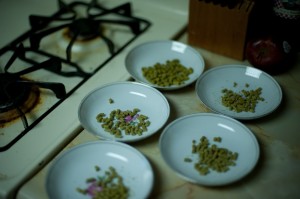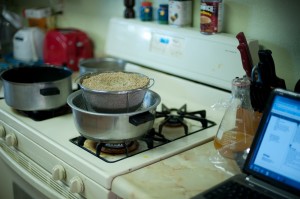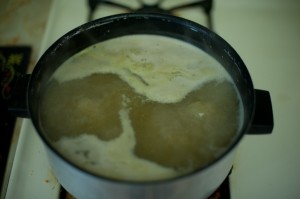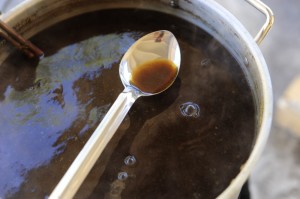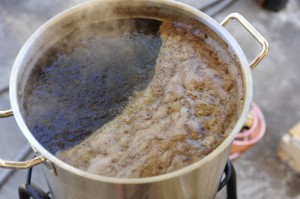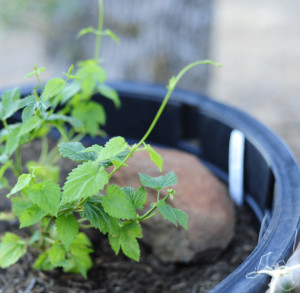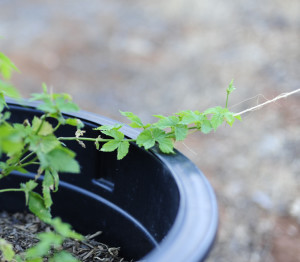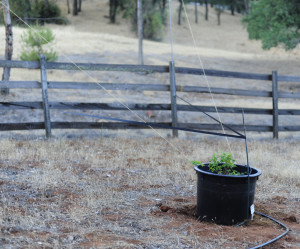This is a chocolate mint porter. Brew Day started bright and early on Sunday. I still struggled with the mash. I need to look carefully at how I’m building the recipe in Beersmith (actually, this an interpretation of a Jamil Robust Porter recipe from a user on Beersmithrecipes.com that I modified for my purposes). I believe I’m using too much water. The starches are being converted and giving the right gravity, but by the time I sparge, it dilutes down too far. I had 1-2 gallons of wort that never made it into the boiling pot. It wasn’t too far off, though…I think it’ll work fine for this brew.
The 90-minute boil went fine, although I did have a bit of foam spill over at the beginning of the boil, making a bit of a mess on the outside of the pot. It turned into a dark, dark brown wort with a nice tan “head” that I hope carries over to the finished product.
I fell a little short on the hops (didn’t have the surplus I thought I had), but I want the sweetness of the chocolate to come through, anyway.
I ended up with about 1/2 ounce of fresh mint from our garden. This worked very well in the Mojito Beer, so I have high hopes for it here. I only gave it about 10 minutes in the boil… looking for more aroma than flavor. I’m really hoping for a chocolate-mint candy impression in the finished beer. If it needs more mint after primary fermentation, I can add more to the secondary. That’s also when I plan to add the cacao nibs.
However, I added about 3 ounces of this wonderful dark chocolate I found at BevMo in Lodi. Yum…
Recipe Details
| Batch Size | Boil Time | IBU | SRM | Est. OG | Est. FG | ABV |
|---|---|---|---|---|---|---|
| 6 gal | 90 min | 38.0 IBUs | 36.0 SRM | 1.061 | 1.016 | 6.0 % |
| Actuals | 1.06 | 1.01 | 6.6 % | |||
Style Details
| Name | Cat. | OG Range | FG Range | IBU | SRM | Carb | ABV |
|---|---|---|---|---|---|---|---|
| Robust Porter | 12 B | 1.048 - 1.065 | 1.012 - 1.016 | 25 - 50 | 22 - 35 | 1.8 - 2.5 | 4.8 - 6.5 % |
Fermentables
| Name | Amount | % |
|---|---|---|
| Simpsons Ale - Golden Promise | 10.878 lbs | 75 |
| Bestmaltz Munich Light | 1.595 lbs | 11 |
| Joe White/Maltcraft Chocolate | 13.92 oz | 6 |
| Simpsons Black Malt | 9.28 oz | 4 |
| Weyermann® Carapils®/ Carafoam® | 9.28 oz | 4 |
Hops
| Name | Amount | Time | Use | Form | Alpha % |
|---|---|---|---|---|---|
| Goldings, East Kent | 1.4 oz | 60 min | Boil | Pellet | 5.4 |
| Fuggles | 0.8 oz | 60 min | Boil | Pellet | 5 |
| Fuggles | 0.89 oz | 30 min | Boil | Pellet | 5 |
| Fuggles | 0.42 oz | 0 min | Boil | Pellet | 5 |
| Goldings, East Kent | 0.42 oz | 0 min | Boil | Pellet | 5.4 |
Miscs
| Name | Amount | Time | Use | Type |
|---|---|---|---|---|
| Whirlfloc Tablet | 1.00 Items | 15 min | Boil | Fining |
| Fresh Mint Leaves | 2.00 oz | 10 min | Boil | Herb |
| Chocolate (Dark) | 4.00 oz | 5 min | Boil | Spice |
| Cacao Nibs | 4.00 oz | 0 min | Secondary | Spice |
Yeast
| Name | Lab | Attenuation | Temperature |
|---|---|---|---|
| British Ale Yeast (1098) | Wyeast Labs | 74% | 64°F - 72°F |
Mash
| Step | Temperature | Time |
|---|---|---|
| Saccharification | 154.4°F | 60 min |
| Mash Out | 168.8°F | 10 min |
Notes
| From Beersmith recipes Regan Dillion Porter (Jamil BYO). |
Download
| Download this recipe's BeerXML file |
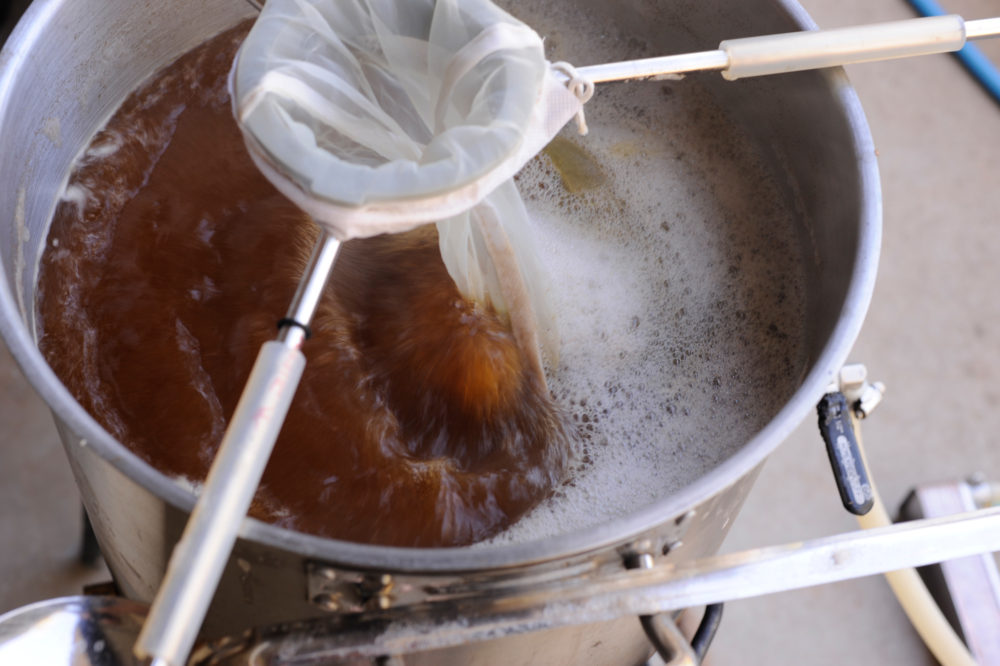
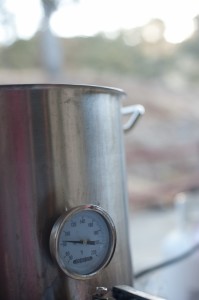
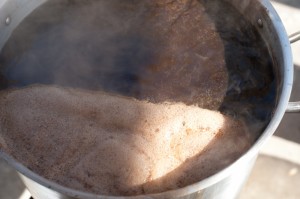
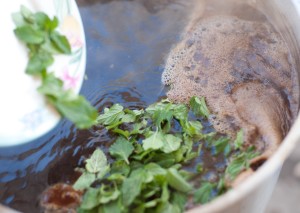

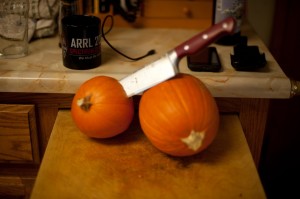
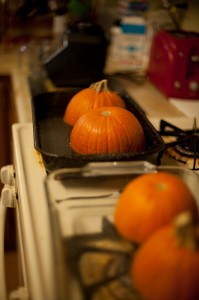
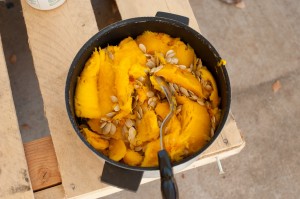
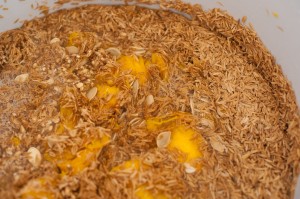
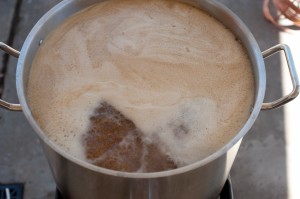

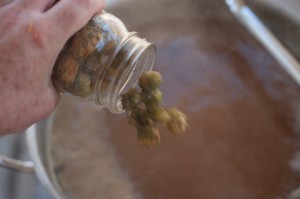
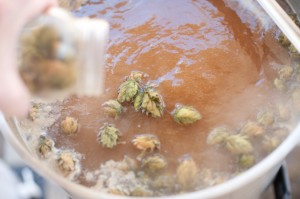
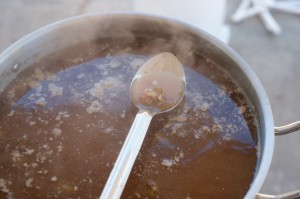
![_AMT4781 [1600x1200]](http://commanderdata.com/3Acres/wp-content/uploads/2013/09/AMT4781-1600x1200-300x199.jpg)

